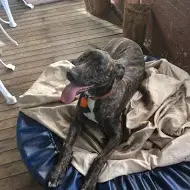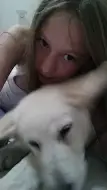
Browse Categories
- Dog Boot Camps
- Test
- Test
- Dogs Please Clicker Training
- Pet Insurance Comparison
- Exercising Pets With An E Scooter
- 10 Reasons Why Guinea Pigs Are Wholesome Little Pets
- Why You Should Use a Shed to House Your Pet
- How can Dog Owners Keep their Carpets Clean?
- How to Keep Your House in Order With Large Pets
- What is the Best Way to Feed a Puppy to Keep Them Healthy
- Pets Please
- All Animals and Pets
- Dogs and Puppies
- Cats and Kittens
- Birds
- Fish
- Reptiles
- All Other Small Pets
- Claws 'N' Paws Events
- PetsInLimbo/Greys4PetsInc.
News Search
PetsPlease News and Advice
Dogs Please Clicker Training Week 6
Week 6

Proofing and Variable Reward
This is my favourite week because this is when we get into the task of strengthening everything that your dog has learned so far. This week we are going to be exploring two of the more common dog training mistakes and how you can avoid them.
The first thing we will look at is variable reward. After many experiments, of the kind variety, scientists studying behavior have established that most of us learn best by something known as variable reward. In dog training terms this means that, when a dog is beginning to build confidence in his ability of any particular command, we change the way that we reward him.
Dogs notice patterns, which too was obvious during experimentation, because when an intermittent reward was given their interest in the task waned. As did their interest when a reward was given every time that they performed a command when they have learned or almost learned it.
Variable reward does something very special in dog training, it leaves the dog unaware of when the next reward will appear so it keeps him motivated. Variable reward must be completely random to work at its most effective though and if you have never tried it you will really, quickly, see the difference.
Here is how to manage treats perfectly when training your dog to do something new.
1. Train a command in basic, none distracting circumstances but using the steps we did last week. Remember that at this point it’s vital to keep the dog’s confidence high so treat every time, swiftly enough to prevent confusion, when he is learning.
2. As the dog gets the idea, after a few sessions begin to withhold the click and treat when he follows the command BUT only on some occasions. For instance if your dog is sitting every time you ask him to but his response time is slow then on one of his sits don’t click at all, just show him the treat and release him from the position. Then ask him to sit again immediately afterwards. Your dog will respond much quicker because he will think that sitting quicker is more likely to provoke a reward. This is exactly how variable reward works.
3. Eventually when your dog knows the command you can make it a stronger response by clicking and treating sometimes. Remember to keep things random though and keep your dog guessing.
4. Then you can stop rewarding, with a treat, a good quick response and just tell the dog he is a good boy instead. Then you will have the power of the treats to teach the next thing.
An Experiment of Your Own
This week I would like you to put variable reward to the test. I would like you to note the difference in your dog’s enthusiasm when he has no idea when his next click and treat will arrive. Is it a big difference in response?
You can also alternate between treat types in the same way, a dog that has no idea whether he will get cheese or kibble for his next reward will be a very keen learner indeed.
Proofing
Proofing a behaviour, or context learning as it’s also known, is the act of making sure a dog can respond to a command whatever environment he is in.
You know the feeling when you bump into someone from work, in an unusual place, and you have no idea who they are? Or you are away on holiday and a bit lost in the new kitchen of your holiday rental because you have not learned where everything is yet? This is a result of, seeing someone that is out of context or of you being in an area where you are out of your usual context. The differences can confuse you for a moment.
A dog feels this too but often it is even harder for him. Many people believe that if they have taught their dog to sit, at home, then the dog will know what the sit command means at the park also. This is not the case.
So when you are teaching your dog anything new then it’s important to make sure, after he has learned the command perfectly to practice it in as many areas as possible. Always begin with low distraction areas and build them gradually – remember you are setting your dog up for success at every stage.
The trick is to increase the reward amount as you increase the distraction to keep the focus on you. Then gradually as your dog knows the command in every area you can drop off the use of rewards at all.
So remember;
· Use lots of click/reward in the beginning when your dog is learning something new. In an area of low distractions.
· Start to use variable reward to sharpen a learned behaviour, still in a low distracting area.
· When your dog has the idea then increase distractions gradually and increase the reward alongside the distractions. Remember more distraction will need more reward, to keep the dog focused on you and motivated to learn.
. As the areas become naturally less distracting to the dog and his response to the command becomes stronger you can gradually phase out the treats altogether. Remember though that in a new area your dog may need the motivation of a treat, at least for a while.
A Small Project
Now I would like you to continue teaching the basic command that you chose last week; until it is the strongest command that your dog has ever learned.
Or if you prefer, and have plenty of time for training you could even tackle something completely new and follow the steps of the last two weeks perfectly from start to finish!
Good luck, remember to keep in touch and we’ll see you next week.

Wednsday 29th April 2015
